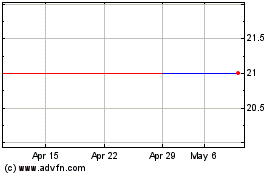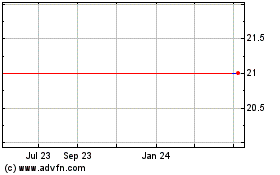By Thomas Grove
SUKHOI LOG, Russia -- Beneath this plot of land in southeastern
Siberia lie vast stores of gold, according to Russia's biggest gold
producer, Polyus PJSC, and tapping them could provide the Russian
central bank with a huge and nearly sanction-proof backstop for its
currency.
Tests commissioned by the company last year and undertaken by
Australia-based AMC Consultants, along with a scoping study
conducted in 2008, determined that there are 63 million ounces of
gold at Sukhoi Log, Polyus has told investors. While independent
mining analysts haven't confirmed that estimate on their own, many
of them refer to Sukhoi Log as one of the world's largest untapped
gold deposits.
"And that may just be the beginning," said Polyus geologist
Svetlana Deys. "The gold could extend far beyond the reach of the
Sukhoi Log license." Polyus says the prospective mine holds
approximately a quarter of all Russia's known gold underground.
The news is good for both Polyus and the Russian government.
Unlike other producers that move their bullion on world markets,
Polyus sells its gold exclusively to large Russian state banks,
which then resell it to the country's central bank. Once mining
begins, the bank can use the mine's gold to support its ruble
currency or sell it for extra foreign currency in times of
crisis.
Gold has become a major holding in Russia's central bank
reserves, with its share nearly double what it was in 2014, when
the bank started dumping its U.S. Treasury and dollar holdings amid
increased tensions between Russia and the U.S.
Last year, the central bank's deputy head, Dmitry Tulin, told
lawmakers that while gold prices may fluctuate, "it's a 100%
guarantee against legal and political risks."
Russia is hardly alone in making that observation. Globally
central banks have markedly increased their purchases of gold over
the last decade. Last year saw the biggest buying by central banks
since 2015 as more developing countries worked to increase their
reserves.
Russia's central bank likely bought around 270 tons of gold,
more than a third of global purchases, making it by far the world's
biggest buyer of the metal, according to Junlu Liang, a senior
analyst at Metals Focus, a London-based consulting firm. "Russia
will likely remain a major gold buyer given mine production that
helps it buy on the domestic market," she said.
Polyus's gold transactions, though expressed in dollars on the
London bullion market, are conducted solely in rubles, making
purchases cheaper and easier for Russian banks. Most central banks
buy their bullion on global exchanges in dollars.
The central bank said last month that in the 12 months ending
June 30, it had boosted its share of gold reserves 14% to $76.7
billion and bought up euros and yuan while it dumped around $100
billion in U.S. dollars.
Sukhoi Log, where open-pit gold production is expected to begin
in the mid-2020s, assures a steady supply for the future.
"This is the Holy Grail of gold mining effectively, given the
quality and given the scale," said Polyus Chief Financial Officer
Mikhail Stiskin. "As long as Russia wants to move away from the
dollar and into gold, the sales will be there."
Polyus's own history has tracked the ups and downs of
Russia-U.S. relations. In 2015, the company delisted itself from
the London Stock Exchange after ties with the West plummeted over
the Ukraine crisis, which saw Russia's annexation of the Crimean
Peninsula in 2014. In 2017, in search of more capital, it relisted
on the same bourse and made a second offering on the Moscow Stock
Exchange.
The company hasn't been hit by U.S. sanctions but investors have
been wary about further U.S. measures that could target the
company. When U.S. lawmakers last year aired the idea of
sanctioning companies owned by relatives of blacklisted
businessmen, Polyus remained silent but took note.
Sanctioned Russian tycoon Suleiman Kerimov, who first bought a
stake in the company in 2009, put his shares in a blind trust for
his family when he first became a lawmaker. In 2015 those shares
were transferred to his son, Said, who now owns more than 82% of
the company.
For now, Polyus geologists are poring over enormous cylinders of
rock extracted from Sukhoi Log's rock bed. Working in 12-hour
shifts, the geologists examine the samples for changes in color,
formation and texture and enter the information into a digital
database. Polyus turns that information into a 3-D model of what
lies underground, allowing it to understand how to dig.
The samples are cleaned and pulverized, and the powder is sent
off in 200-milligram envelopes to an independent laboratory in
Chita, more than 600 miles away. The laboratory and AMC Consultants
have verified more gold reserves than previously believed and a
grade of 2.1 grams per ton. According to the World Gold Council,
that is about the average grade for open-pit ore, and above the
median.
Sukhoi Log was first discovered in 1961 after a Soviet geologist
estimated that the rock formations, similar to those in South
Dakota's gold-rush country, could hold great reserves of the metal.
After decades of Soviet mismanagement that delayed exploitation,
the Russian government made its first estimates of Sukhoi Log's
reserves in the late 1990s.
Polyus sees Sukhoi Log, together with Natalka mine, another big
gold mine in eastern Siberia, as safeguards against what it sees as
the increased likelihood of consolidation in the gold-mining
industry as gold grades drop broadly through the industry.
Among some of the bigger mergers and acquisitions in recent
years was the purchase of Mali-based Randgold by Canadian-based
Barrick Gold, the world's biggest gold-mining company.
When the license for exploration of Sukhoi Log went up for
auction in 2017, Polyus joined Russian arms conglomerate Rostec in
buying the rights. Polyus, which now owns a 58.4% stake in the
plot, plans eventually to buy up all the rights.
Polyus says it is looking to invest a total of $2 billion to
$2.5 billion in Sukhoi Log over a period of several years. For now,
Mr. Stiskin said Polyus believes it can finance the project
completely on its own, adding that other possibilities include
bringing in a partner for the project or taking on loans from
Russian banks.
According to Polyus, Sukhoi Log is likely to be producing more
than 1.6 million ounces of gold every year for more than 35 years,
one of the longest lifespans of any mine globally.
"It's hard not to be excited," Ms. Deys said.
Write to Thomas Grove at thomas.grove@wsj.com
(END) Dow Jones Newswires
February 07, 2019 05:44 ET (10:44 GMT)
Copyright (c) 2019 Dow Jones & Company, Inc.
PJCS Polyus (CE) (USOTC:OPYGY)
Historical Stock Chart
From May 2024 to Jun 2024

PJCS Polyus (CE) (USOTC:OPYGY)
Historical Stock Chart
From Jun 2023 to Jun 2024
